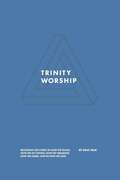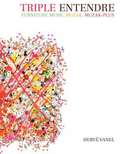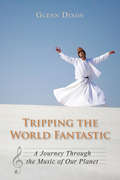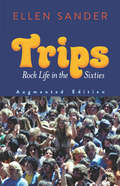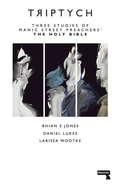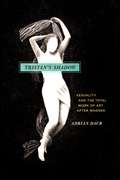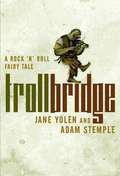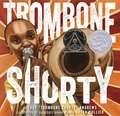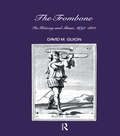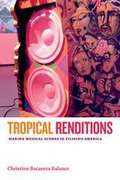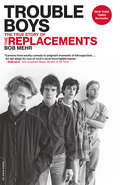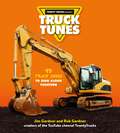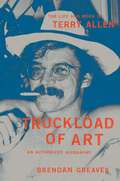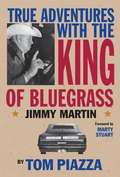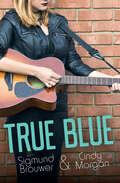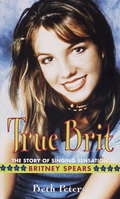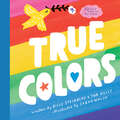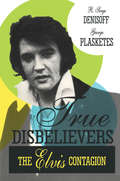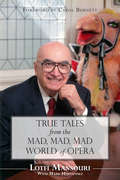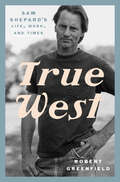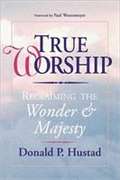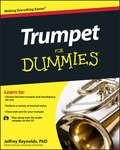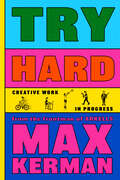- Table View
- List View
Trinity Worship: Becoming Like Christ In How We Relate, How We Do Things, How We Organize, How We Learn, And How We Lead.
by Dave YaukEndorsement from Charlie Hall: In this day and time, we need a loud grace-filled call back to Biblical wisdom around worship as a fully orbed experience of God as Trinity. The people of God need the Father’s heart, the work of Jesus, and the experience of the Holy Spirit. Trinity worship is that call to the Church.The Trinity is not just an "I" but a "We." We, to the contrary, live in a modern age overwhelmed with personalized worship and discipleship methods. People roam about desperately trying to build their own fame and kingdoms all the while bearing the fruit of anxiety, stress, and burden. Deep within we know we are meant to point to something outside and greater than ourselves, but our attempts to give allegiance to lesser loves and benign kings sitting high on imaginary thrones have left us empty. Trinity Worship sheds light on the perfection we're searching for. The word that best describes the pursuit of what is ultimate is worship. Worship goes beyond just singing. It's a world word. It's an everything word. Who or what we honor as an authority, ruler, and as worthy of our trust, will determine how we handle all matters pertaining to home, work, and play. This book ponders deeply the creativity, family, and friendly nature of God and his kingdom in order to best describe how we as humans are to fully enjoy our existence. The Trinity has a way he relates, a way he does things, a way he teachers and desires us to learn, an order for life, and a clear mission. By trusting in him, pointing to him, bowing to his reign, and following after his nature as we carry his image, we will bear the fruit of life, joy, and peace.
Triple Entendre: Furniture Music, Muzak, Muzak-Plus
by Herve VanelTriple Entendre discusses the rise and spread of background music in contexts as diverse as office workplaces, shopping malls, and musical performance. Hervé Vanel examines background music in several guises, including Erik Satie's "Furniture Music" of the late 1910s and early 1920s, which first demonstrated the idea of a music not meant to be listened to, and the Muzak Corporation's commercialized ambient music that became a predominant feature of modern life in the 1940s. Vanel's discussion culminates in the creative response of the composer John Cage to the pervasiveness and power of background music in contemporary society. By examining the subterranean connections existing between these three formulations of a singular idea, Triple Entendre analyzes and challenges the crucial boundary that separates an artistic concept from its actual implementation in life.
Tripping the World Fantastic: A Journey Through the Music of Our Planet
by Glenn DixonA fascinating journey through the world’s musical cultures. Every culture on Earth has music. Every culture that’s ever existed has had it, but we don’t exactly know why. Music is not like food, shelter, or having opposable thumbs. We don’t need it to live, and yet we can’t seem to live without it. Glenn Dixon travels the globe exploring how and why people make music. From a tour of Bob Marley’s house to sitar lessons in India, he experiences music around the world and infuses the stories with the latest in brain research, genetics, and evolutionary psychology. Why does music give us chills down the backs of our necks? What exactly are the whales singing about and why does some music stick in our minds like chewing gum? Through his adventures, Dixon uncovers the real reasons why music has such a powerful hold on us – and the answers just might surprise you.
Trips: Rock Life in the Sixties—Augmented Edition
by Ellen Sander"Simply one of the best pieces of rock reportage ever written." — Los Angeles Review of BooksAs a pioneering rock journalist for Hit Parader, Vogue, Saturday Review, and other publications, Ellen Sander had a backstage pass to the hottest music scenes of the 1960s. In this feast of juicy anecdotes and keen social commentary, she draws upon her professional and personal experiences to chronicle pop culture's highs and lows during the turbulent decade. Join her for weird and wild road trips with companions ranging from Yippies to the members of Led Zeppelin. Stops along the way include the folk music clubs of Greenwich Village, Haight-Ashbury in its riotous heyday, and the euphoric festivals at Monterey and Woodstock."It is a memoir, a sourcebook, and a love letter," Sander writes, "a recollection of a time, parenthesized by ambivalence and apathy, a search for the ultimate high, a generation with an irrepressible vision, its art, artists, its audience, and the substance of its statement." This expanded edition of Trips adds "The Plaster Casters of Chicago," Sander's seminal piece on groupie culture, the lengthy "Concerts and Conversations," as well as a new Preface and chapter postscripts.
Triptych: An Examination of the Manic Street Preachers Holy Bible
by Larissa Wodtke Rhian E. JonesThe UK alternative rock band, Manic Street Preachers, were and remain one of the most interesting, significant, and best-loved bands of the past thirty years. Their third album The Holy Bible (1994) is generally acknowledged to be their most enduring and fascinating work, and one of the most compelling and challenging records of the nineties. Triptych reconsiders The Holy Bible from three separate, intersecting angles, combining the personal with the political, history with memory, and popular accessibility with intellectual attention to the album's depth and complexity.
Tristan und Isolde in Full Score (Dover Opera Scores)
by Richard WagnerAmong musicologists and serious lovers of music, Wagner's Tristan und Isolde is generally considered the high point of orchestration in the musical tradition of nineteenth-century Europe. It shows in most successful form Wagner's unsurpassed gift for using the instruments of the orchestra, and generations of students have worked with it to learn its technique.Tristan und Isolde also has a remarkable historical position. It was the opera that most of the post-Wagnerians used to build upon, and it was also the opera that the anti-Wagnerians seized upon very frequently for their attacks and for their attempts to move musically away from Wagnerism. Accepted or rejected, it has been the work with which late nineteenth- and early twentieth-century musicians had to come to terms, and much musical history of this period can be understood through it.This edition reproduces the full orchestral score in a clear, modern engraving for easy reading and piano study, with large legible notation. Do not confuse this with a piano rendering; it is a full orchestral score. In addition to its obvious uses for study, this score is also an indispensable associate for anyone listening to recordings. In no other manner can the listener keep full awareness of the incredible orchestral richness of this opera.
Tristan's Shadow: Sexuality and the Total Work of Art after Wagner
by Adrian DaubDas Rheingold, Die Walküre, and Siegfried. Parsifal. Tristan und Isolde. Both revered and reviled, Richard Wagner conceived some of the nineteenth century’s most influential operas—and created some of the most indelible characters ever to grace the stage. But over the course of his polarizing career, Wagner also composed volumes of essays and pamphlets, some on topics seemingly quite distant from the opera house. His influential concept of Gesamtkunstwerk—the “total work of art”—famously and controversially offered a way to unify the different media of an opera into a coherent whole. Less well known, however, are Wagner’s strange theories on sexuality—like his ideas about erotic acoustics and the metaphysics of sexual difference. Drawing on the discourses of psychoanalysis, evolutionary biology, and other emerging fields of study that informed Wagner’s thinking, Adrian Daub traces the dual influence of Gesamtkunstwerk and eroticism from their classic expressions in Tristan und Isolde into the work of the generation of composers that followed, including Zemlinsky, d’Albert, Schreker, and Strauss. For decades after Wagner’s death, Daub writes, these composers continued to grapple with his ideas and with his overwhelming legacy, trying in vain to write their way out from Tristan’s shadow.
Troll Bridge: A Rock 'N' Roll Fairy Tale
by Jane Yolen Adam StempleSixteen-year-old harpist prodigy Moira is transported to a strange and mystical wilderness, where she finds herself in the middle of a deadly struggle between a magical fox and a monstrous troll.
Trombone Shorty
by Troy "Trombone Shorty" AndrewsA 2016 Caldecott Honor Book and Coretta Scott King (Illustrator) Award Winner Hailing from the Tremé neighborhood in New Orleans, Troy "Trombone Shorty" Andrews got his nickname by wielding a trombone twice as long as he was high. A prodigy, he was leading his own band by age six, and today this Grammy-nominated artist headlines the legendary New Orleans Jazz Fest. Along with esteemed illustrator Bryan Collier, Andrews has created a lively picture book autobiography about how he followed his dream of becoming a musician, despite the odds, until he reached international stardom. Trombone Shorty is a celebration of the rich cultural history of New Orleans and the power of music.
Trombone: Its History and Music, 1697-1811 (Musicology)
by D. M. GuionFirst Published in 1988. Routledge is an imprint of Taylor & Francis, an informa company.
Tropical Renditions: Making Musical Scenes in Filipino America
by Christine Bacareza BalanceIn Tropical Renditions Christine Bacareza Balance examines how the performance and reception of post-World War II Filipino and Filipino American popular music provide crucial tools for composing Filipino identities, publics, and politics. To understand this dynamic, Balance advocates for a "disobedient listening" that reveals how Filipino musicians challenge dominant racialized U.S. imperialist tropes of Filipinos as primitive, childlike, derivative, and mimetic. Balance disobediently listens to how the Bay Area turntablist DJ group the Invisibl Skratch Piklz bear the burden of racialized performers in the United States and defy conventions on musical ownership; to karaoke as affective labor, aesthetic expression, and pedagogical instrument; to how writer and performer Jessica Hagedorn's collaborative and improvisational authorial voice signals the importance of migration and place; and how Pinoy indie rock scenes challenge the relationship between race and musical genre by tracing the alternative routes that popular music takes. In each instance Filipino musicians, writers, visual artists, and filmmakers work within and against the legacies of the U.S./Philippine imperial encounter, and in so doing, move beyond preoccupations with authenticity and offer new ways to reimagine tropical places.
Trouble Boys: The True Story of the Replacements
by Bob MehrTrouble Boys is the first definitive, no-holds-barred biography of one of the last great bands of the twentieth century: The Replacements. With full participation from reclusive singer and chief songwriter Paul Westerberg, bassist Tommy Stinson, guitarist Slim Dunlap, and the family of late band co-founder Bob Stinson, author Bob Mehr is able to tell the real story of this highly influential group, capturing their chaotic, tragic journey from the basements of Minneapolis to rock legend. Drawing on years of research and access to the band's archives at Twin/Tone Records and Warner Bros. Mehr also discovers previously unrevealed details from those in the group's inner circle, including family, managers, musical friends and collaborators.
Truck Song
by Diane Siebert"country sprawling / lined with roads / trucks are hauling / heavy loads ..." Over highways, past farmlands and cities, through rain and sun, all kinds of trucks are carrying goods from one place to another. And when they arrive at their final destination, what next? Another run, of course!
Truck Tunes: 45 Truck Songs to Sing Aloud Together
by Jim Gardner Rob GardnerFrom the creators of the popular Truck Tunes and Twenty Trucks songs comes a bright, fun singalong book celebrating kids' favorite trucks! Sing and dance your way into the world of trucks with this collection of 45 catchy, fun, and educational truck songs accompanied by photographs of real trucks in action. From the creators of Twenty Trucks and Truck Tunes comes the first-ever book with this brand. From timeless classics such as dump trucks, fire trucks, excavators, and cement mixers to the not-so-known but equally amazing concrete boom pumps, delimbers, vacuum trucks, and more, this is the must-have book for the truck-loving toddler and young child in any family.
Truckload of Art: The Life and Work of Terry Allen—An Authorized Biography
by Brendan GreavesThe definitive, authorized, and first-ever biography of Terry Allen, the internationally acclaimed visual artist and iconoclastic songwriter who occupies an utterly unique position straddling the disparate, and usually distant, worlds of conceptual art and country music. &“People tell me it&’s country music,&” Terry Allen has joked, &“and I ask, &‘Which country?&’&” For nearly sixty years, Allen&’s inimitable art has explored the borderlands of memory, crossing boundaries between disciplines and audiences by conjuring indelible stories out of the howling West Texas wind. In Truckload of Art, author Brendan Greaves exhaustively traces the influences that shaped Allen&’s extraordinary life, from his childhood in Lubbock, Texas, spent ringside and sidestage at the wrestling matches and concerts his father promoted, to his formative art-school years in incendiary 1960s Los Angeles, and through subsequent decades doggedly pursuing his uncompromising artistic vision. With humor and critical acumen, Greaves deftly recounts how Allen built a career and cult following with pioneering independent records like Lubbock (on everything) (1979)—widely considered an archetype of alternative country—and multiyear, multimedia bodies of richly narrative, interconnected art and theatrical works, including JUAREZ (ongoing since 1968), hailed as among the most significant statements in the history of American vernacular music and conceptual art. Drawing on hundreds of revealing interviews with Allen himself, his family members, and his many notable friends, colleagues, and collaborators—from musicians like David Byrne and Kurt Vile to artists such as Bruce Nauman and Kiki Smith—and informed by unprecedented access to the artist&’s home, studio, journals, and archives, Greaves offers a poetic, deeply personal portrait of arguably the most singularly multivalent storyteller of the American West.
True Adventures With the King of Bluegrass
by Tom PiazzaPiazza found himself pitched headlong into a world he couldn't have anticipated. Martins mercurial personality drew the writer into a series of escalating encounters (with mean dogs, broken-down cars, and near electrocution), culminating in a harrowing and unforgettable expedition, with Martin, to the Grand Ole Opry. Piazza captured his visit with Martin in supple, electric prose, and the result, when it appeared in The Oxford American, quickly became a word-of-mouth sensation among musicians and fans alike. Some explicit language.
True Blue (Orca Limelights)
by Sigmund Brouwer Cindy MorganTrue Blue continues the story that began in Billboard Express. Elle is on the road as an opening act for Johnny James, the biggest star in country music. Touring is everything she's ever dreamed of, but it has unexpected downsides: crazy fans, jealous backup singers, weird rules on the tour bus. But when something goes terribly wrong during a performance, Elle struggles to figure out how she can make things right with her fans, her father, her record company and with her friend Webb. This short novel is a high-interest, low-reading level book for middle-grade readers who are building reading skills, want a quick read or say they don’t like to read! The epub edition of this title is fully accessible.
True Brit
by Beth PetersPOP PRINCESS Britney Spears is putting girls back on the map in the pop music world. With the effervescent and intoxicating sounds of her first album, . . . Baby One More Time, Britney shot straight to the top of the charts--in just the first week of the album's release. Her ripe style and smart lyrics have captured the hearts of millions of fans, young and old. But Britney didn't just come out of nowhere: she is a multitalented entertainment sensation who can't remember a time in her life when she wasn't singing, acting, or dancing. She broke into the biz at the tender age of eight, and it wasn't long before she made her mark. TRUE BRIT gives you all the backstage info, from her first audition for The New Mickey Mouse Club to her exciting decision to go solo. You'll also find out what it was like for Brit to work with the boys of 'N Sync, the rumors of romance, and her dazzling life beyond the stage. Britney is more than just a singer--she's a performing phenomenon. And TRUE BRIT is your ticket into her amazing world.
True Colors
by Tom Kelly Billy SteinbergBased on the hit song, this beautiful book is the perfect gift for anyone who needs to be reminded of the importance of being their true selves.Through reassuring lyrics that encourage us to be our true selves, "True Colors" has become a beloved song worldwide since its release in 1986. Now, for the first time ever, this inspiring and iconic song is in book form accompanied by gorgeous illustrations, and perfectly packaged with a ribbon enclosure.Ideal for any age--and as a gift anytime during the year--this book about having confidence in yourself is sure to be a huge comfort.
True Disbelievers: Elvis Contagion
by R. Serge Denisoff George PlasketesThe legion of fans who refuse to believe that Elvis Presley died August 16, 1977 has been a major force behind the ever-expanding, elusive, and enduring Elvis myth during the past seventeen years. This network of fervent true believers engages in activities that include a melange of sightings and conspiracy theories. Mass media coverage of these phenomena has evolved from the underground grass-roots level to widespread publicity with social, religious, commercial, and ideological underpinnings. In True Disbelievers, R. Serge Denisoff and George Plasketes examine the implications of various accounts and several perspectives on Elvis Presley's death and transfiguration.Denisoff and Plasketes also analyze the various media that those who doubt Elvis's death use to popularize their positions, including television, magazines, and books. They review the work of others who have written on the subject, such as Gail Brewer-Giorgio and Major Bill Smith, and raise provocative, yet valid questions about the phenomenon they describe. True Disbelievers takes a pointed look at the music industry as well, and how it has used and commercially benefitted by the continuing belief that Elvis lives. They examine common strands in the many reports of Elvis sightings since Presley's reported death. Denisoff and Plasketes describe the Elvis phenomenon in serious, objective as well as empathetic terms, placing it in the context of studies of cult figures and their followers. True Disbelievers contains a great deal of fascinating information about America's popular culture and the power and influence of the media in modern society. It will be of significant interest to communication studiesscholars,sociologists,professionals in the music and media industries, and those interested in popular culture.
True Tales from the Mad, Mad, Mad World of Opera
by Carol Burnett Lotfi Mansouri Mark HernandezAn insider’s view of the opera world from one of its greatest figures. Everything about opera is larger than life, but the bigger the art form, the bigger the potential for disaster. When things go wrong at the opera house, they really go wrong. No one has a greater or more intimate knowledge of such moments than Lotfi Mansouri. Over the course of a career that has spanned five decades, Mansouri has directed nearly 500 productions at major opera houses around the globe. Mansouri has gathered a collection of discrete vignettes that recount unforgettable and revealing moments at the opera as personally experienced or witnessed by him. From unbelievable snafus to unfortunate mishaps to astounding coincidences, these vignettes feature some of the biggest names in opera, as well as prominent figures from politics and more. From the hilarious to the bizarre, this is a reader-friendly look at what is often thought of as an overly serious, even mysterious form of art.
True West: Sam Shepard's Life, Work, and Times
by Robert GreenfieldA revelatory biography of the world-famous playwright and actor Sam Shepard, whose work was matched by his equally dramatic life, including collaborations with the Rolling Stones and Bob Dylan as well as tumultuous relationships with Patti Smith, Joni Mitchell, and Jessica Lange&“Robert Greenfield&’s vivid, clear-eyed biography captures both the man and the myth—and, perhaps most important, the writer, who sang a new kind of song in American theater.&”—Michael Schulman, author of Her Again: Becoming Meryl Streep True West: Sam Shepard&’s Life, Work, and Times is the story of an American icon, a lasting portrait of Sam Shepard as he really was, revealed by those who knew him best. This sweeping biography charts Shepard&’s long and complicated journey from a small town in Southern California to become an internationally known playwright and movie star. The only son of an alcoholic father, Shepard crafted a public persona as an authentic American archetype: the loner, the cowboy, the drifter, the stranger in a strange land. Despite his great critical and financial success, he seemed, like so many of his characters, to remain perpetually dispossessed.Much like Robert Greenfield&’s biographies of Jerry Garcia and Timothy Leary, this book delves deeply into Shepard&’s life as well as the ways in which his work illuminates it. True West takes readers through the world of downtown theater in Lower Manhattan in the early sixties; the jazz scene at New York&’s Village Gate; fringe theater in London in the seventies; Bob Dylan&’s legendary Rolling Thunder tour; the making of classic films like Zabriskie Point, Days of Heaven, and The Right Stuff; and Broadway productions of Buried Child, True West, and Fool for Love.For this definitive biography, Greenfield interviewed dozens of people who knew Shepard well, many of whom had never before spoken on the record about him. While exploring his relationships with Patti Smith, Bob Dylan, Joni Mitchell, and Jessica Lange across the long arc of his brilliant career, Greenfield makes the case for Shepard as not just a great American writer but a unique figure who first brought the sensibility of rock &’n&’ roll to theater.
True Worship: Reclaiming The Wonder And Majesty
by Donald P. HustadWorship is one of the most divisive issues in churches today. Donald Hustad responds to the cataclysmic changes in worship styles over the last fifty years, examining the biblical elements of worship and offering a model for richer, God-honoring services. This provocative book is must reading for all pastors, church music leaders and educators, worship committees, and all Christians interested in worship.
Trumpet For Dummies
by Jeffrey ReynoldsHow to get a good sound, read music, and master a variety of styles-including classical, pop, jazz, and Latin Listening to a trumpet trilla series of high notes during a military march or wail longingly during a blues rendition-is a pleasure second to none. And masters, including Wynton Marsalis and Louis Armstrong, have made the trumpet truly Gabriel's horn, one of the most eloquent voices in classical music and jazz. Yet even a virtuoso begins somewhere. This down-to-earth and user-friendly guide shows those new to the trumpet everything they need know to play the instrument-from basic technique (including getting a good sound), caring for a trumpet, and learning pieces from many musical genres. Demonstrates how to play classical, pop, jazz, and Latin-with audio samples on the enclosed CD-ROM Includes tips on how to buy or rent the best instrument An ideal guide for students just learning the trumpet, or students who need a little boost, or fans of the trumpet who've never got around to learning it, here is the complete guide to making one of the world's most popular-and beloved instruments-their own. Note: CD-ROM/DVD and other supplementary materials are not included as part of eBook file.
Try Hard: Creative Work in Progress
by Max KermanFunny, conversational, and relatable, Try Hard is for anyone looking to make sense of their own creative pursuit or bring more creativity into their life, offering a framework for how to do it and where to begin.Let&’s say you see a familiar musician from a globe-trotting, touring band hanging out at your local coffee shop, reading the newspaper and typing away on his laptop. This doesn&’t look like a musician at work. He seems approachable enough, so you ask him what exactly he does all day. With a grin on his face, he admits the job might not be what you think. So you take a seat, and ask him every question you&’ve ever had about how it all works: the nuts and bolts of writing a song, preparing for a show, marketing a band, and the day-to-day business of a creative life.With each answer—none of it about talent—you realize this musician is a bit of a…try hard. And the mystery of being a creative person isn&’t actually mysterious at all: it&’s just exploring ideas with an enthusiastic and determined curiosity. Over and over.Max is that musician in the coffee shop, and this is what reading Try Hard feels like: one-of-a-kind tales from a dynamic frontman, and a companion to your own creative work in progress. With a brick-by-brick attitude, Max explores his own growth in the craft of storytelling and performance, the pleasure to be found in collaboration, and the creative spirit required in sharing your art.
